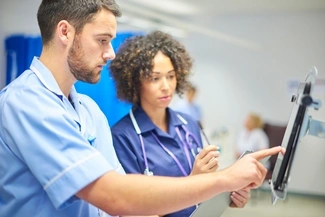Now it's time to cool down. Let's do some gentle stretches to help you lower your heart rate and relax.
You can do these seated or standing. Follow Ellie for the seated vision. If you're standing, you can hold onto something for balance if you need to. Follow Diven and Steve for the standing version.
We'll start the cool down with a march on the spot for two minutes.
You can add in heel digs or toe taps for a good ankle stretch.
So just as we ended the warm up, we're going to start our cool down with a gentle march on the spot.
So if you could start now.
So just a very gentle march now, initiating that cool down.
If you feel confident to, you can do a few heel digs or toe taps out in front of you, just to get a good ankle stretch as well.
Remember, the goal of the cool down is to return back to our resting state, so taking things nice and slowly.
Just gradually slowing down the speed of that march if you can.
Doing really well. So your breathing now should be starting to settle.
If it's not, slowing things down even further.
If you're still feeling a bit puffy, perhaps putting your hands on your hips.
Well done.
So you've got about a minute left now.
Again, if you are puffy, slowing things down to a gradual step.
Well done Diven.
Last little bit everyone.
Final 20 seconds, so slowing it right down if you can.
Nice and slow. That's it, well done.
Now we've finished with our march, we're going to move into some stretches.
Our first stretch is a calf stretch.
So if you can, you're going to extend one foot out in front of you, placing your heel into the floor and you're going to pull your toe towards the ceiling. If you are seated, you might need to shuffle towards the edge of your seat just to get that leg straight.
So again, pulling that toe up, stretching that calf, holding that position for about 15 to 20 seconds.
A really good opportunity now to practice those breathing techniques that we worked on earlier.
And relaxing there.
Swapping over to our other foot if we can.
So extending that leg, heel to the floor, pulling our toe towards the ceiling.
You should feel a gentle pulling or stretching sensation down the back of your lower leg.
And relaxing there. Well done.
Our next stretch is for our hamstrings, so the back of our thigh or upper leg.
So putting one leg out in front of us and our heel into the floor and then, if we can with that straight leg, we're just going to gently lean forward, being mindful not to hunch or bend over.
That's it. Holding it in that position.
If you need a balanced support you can lean on a chair or something stable.
And again, really important that as we hold these stretches, we're breathing as we go through.
And relaxing there.
Swapping straight over to our other side, so heel to the floor, pulling the toe towards you and then gently leaning into that stretched position.
Well done. So these ones will be a little bit uncomfortable, not painful.
And relaxing there.
So just returning to a nice upright position.
If you're sat down, not leaning back in your chair just yet.
We're going to do some gentle side stretches.
So just allowing your arms to naturally fall by your side if you can and then all we're going to do is gently lean to one side, letting our arm drift down our side or down the side of our chair.
Hold for a second, and then back up and then down to our other side.
That's it, holding for a few seconds.
Coming back to the middle, and then we'll just do that once more each side.
Back up.
Well done everyone.
And back up.
Okay, continuing with the leg stretches, we're going to do a front thigh, or quad stretch.
So if you can, you're going to bend one of your legs, pulling your foot up.
That's it.
And if you're sat down, drawing that foot as far back as you can comfortably.
Well done. So a very difficult stretch, so if you do need to lean on something, you can.
So relaxing there and when you're ready, swapping over to your other leg if you can.
Steve's working with an injury today, so he'll only be stretching the one side.
And again, just holding onto something if you need to.
And relaxing there.
Next we're going to do a stretch for our chest.
So if you can without pain, bring your hands behind your back and placing your palms on your lower back, and then all you're going to do is sit up, a nice proud chest and then just pulling those elbows back and towards each other.
If that's too uncomfortable, you can do this with straight arms as Ellie's demonstrating.
So just reaching those hands back to stretch out your chest and shoulders and we'll hold that for 20 seconds.
And relaxing there, and then we'll finish off with a back stretch.
So if you can, interlocking your fingers, palms facing towards you. You're going to reach the hands forward and just think about allowing your back to naturally round or bend over a little bit and we'll hold it there. And if it's comfortable to do so, you can just drop the head between the arms, exaggerating the stretch you get across the top of your neck and back.
And relaxing there.
Well done everyone.
We hope you've enjoyed these activities. Come back and try them whenever you feel up to it.
This video is seven minutes and 57 seconds long and includes:
- seven different movements to gradually lower your heart rate and stretch your muscles. Do each stretch for about 20 seconds.
You can do these exercises seated or standing, whichever is right for you.
Another benefit of this video is it will help you relax, relieve stress and feel better. So you can also do it on its own whenever you feel tense or stressed.
In this video Ellie, Diven and Steve cool down and stretch at a level that’s right for them. It’s important you move at a level that is right for you too.








